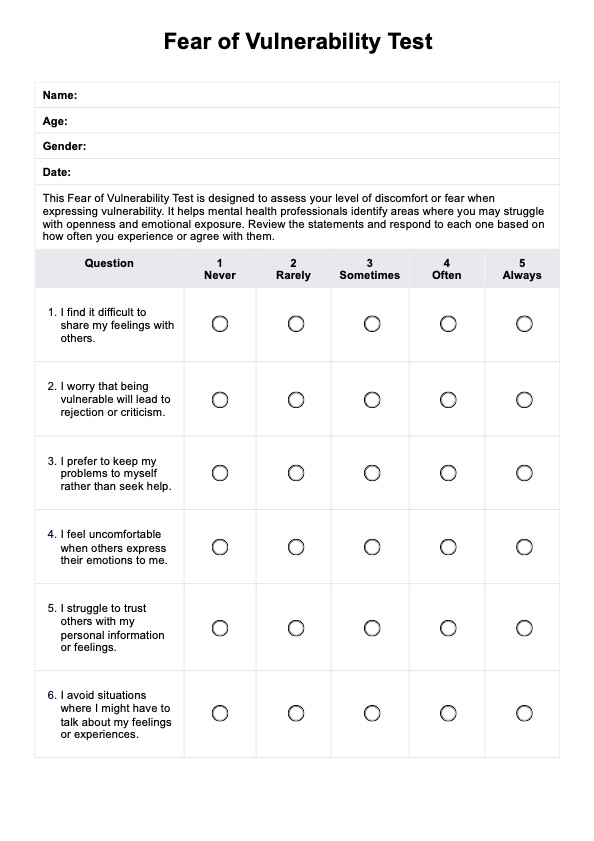Other people's emotions can make you hesitate to show your own feelings, especially if you're worried about being judged or misunderstood. This can increase your fear of vulnerability, making it for self-expression.

Fear of Vulnerability Test
Get this Fear of Vulnerability Test designed to test patients' comfort with openness and emotional exposure.
Use Template
Fear of Vulnerability Test Template
Commonly asked questions
Yes, vulnerability can develop at any stage of life, even in adulthood. With intentional effort and support, you can learn to open up and build emotional resilience, regardless of past fears and negative thoughts.
Some men may fear vulnerability due to societal expectations that associate masculinity with strength and discourage emotional openness.
EHR and practice management software
Get started for free
*No credit card required
Free
$0/usd
Unlimited clients
Telehealth
1GB of storage
Client portal text
Automated billing and online payments











